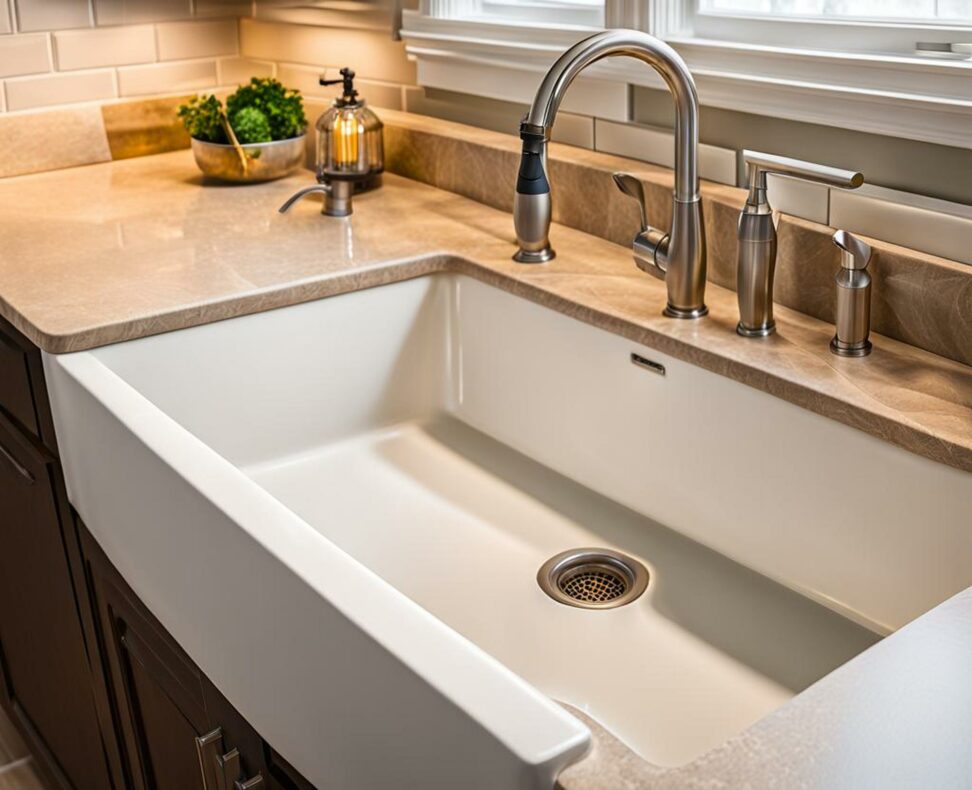What Size Water Lines Do I Need? We Break Down Kitchen Sink Plumbing 101
Installing or replacing the water supply lines for your kitchen sink? Getting the size right is crucial to prevent leaks, flooding, and ensure adequate water flow rate to the faucet and accessories like a dishwasher or garbage disposal.
Whether you're a novice DIYer or a seasoned home plumbing pro, read on to learn key considerations like flow rate, water pressure, pipe materials, and configurations.
Supply Line Sizing Basics
Supply line size refers to the inside diameter of the pipe bringing water to your kitchen faucet. The most common sizes are:
- 1/2 inch - Best for high water pressure and flow rate situations or large sinks
- 3/8 inch - The standard size for most residential kitchen sink applications
- 1/4 inch - Only for small water demands like a utility sink
To determine the ideal supply line size, first assess the incoming water pressure using a psi (pounds per square inch) gauge. Next, calculate the required flow rate in gallons per minute (GPM) based on the number of sink faucets and accessories like a pot filler, soap dispenser or RO filtration system.

With psi and expected GPM known, size the supply lines to handle the demands. Other factors like run length from the shutoff valve to faucet, number of elbows, and pipe material can impact size selection as well.
Accounting for Pressure Loss
Long supply line runs, a multitude of elbow connections, and substandard pipe materials can lead to significant pressure drops. For marginal supply pressure situations, increasing pipe size is an option to help maintain adequate pressure.
Likewise, reducing the length of the supply line run, using smooth elbows, and selecting quality piping materials will help maximize pressure delivery.
Supply Line Material Options
Common supply line plumbing material choices include:
- Copper - Durable and long-lasting but rigid and difficult to install in tight spaces
- Stainless Steel Braided - Flexible with high burst strength but prone to crimping
- PEX - Also flexible with good flow when properly sized. More resistant to mineral deposits than copper.
- Vinyl - Affordable but can become brittle and crack over time
Considerations for selecting supply pipe material include cost, ease of installation, flexibility, longevity and resistance to scale buildup. Copper and stainless steel braided lines are generally the top choices.
PEX Supply Lines
PEX has gained popularity in recent years thanks to its flexibility and corrosion resistance. But proper sizing is key - undersized PEX lines can impede water flow. Consult PEX sizing charts to determine the right diameter lines to handle your identified GPM.
Also avoid excessive bending and be sure to leave some slack to allow for thermal expansion and contraction of PEX pipe.
Supply Line Configurations
Typical kitchen sink supply line configurations include:
- Straight lines from valve to faucet
- L-shaped for rear-oriented shutoff valves
- Pre-made braided hose kits
Measure from the supply valve outlet to the bottom of the faucet shank to determine the required supply line lengths. Allow some extra length for eased routing and bend radius.
Prevent kinks, twists and strain on the supply line connections by securing the lines properly. Plastic pipe clamps work well to anchor lines under the sink.
Water Pressure Guidelines
Proper water pressure is vital for kitchen sink function. Ideal pressure is 30-80 psi. Below 30 psi, you may experience inadequate flow or reach. Above 80 psi risks leaks, damage and water hammer noise.
Use a pressure gauge on the supply lines to measure psi. Adjust pressures with supply valve restrictors if needed. Increasing supply line size can also help maximize lower pressure.
Symptoms of Pressure Problems
How can you tell if your kitchen sink supply pressure needs attention?
- Low Pressure - Poor rinsing, weak stream, slow filling
- High Pressure - Leaking under sink, hammer/banging pipes, shortened faucet life
Diagnosing the symptoms of low or high pressure will point you to the right solutions like pressure regulation or line sizing changes.
Kitchen Sink Flow Rate
Standard kitchen faucets have flow rates between 1.5 and 2.5 GPM. Kitchens with multiple sinks, soap dispensers, filtered water taps and other accessories require added flow capacity.
To determine the total kitchen GPM needs, tally the individual demands of each faucet and accessory. Size the supply lines to deliver the required cumulative GPM.
If incoming water pressure is limited, consider faucet aerators or other flow restrictors on low-demand accessories to control GPM while ensuring adequate flow to primary faucets.
Adequate Flow Prevents Problems
An undersized kitchen supply line results in:
- Insufficient water flow
- Low pressure
- Poor performance of sink accessories
Choosing the right kitchen sink supply line size involves considering the required water pressure, flow rate, run length and configuration. Correct line sizing prevents leaks, maintains water pressure, and provides adequate water flow.
Follow the guidelines provided to select supply line sizes and materials tailored to your specific kitchen setup. Understanding key plumbing factors like GPM and psi ensures your new lines meet the demands placed on them.
With these fundamentals grasped, you'll be equipped to tackle your own kitchen sink supply line project like a pro.